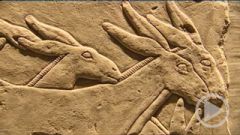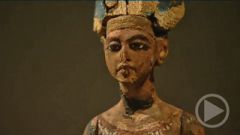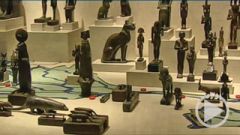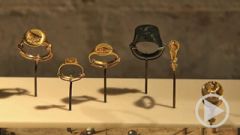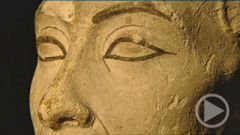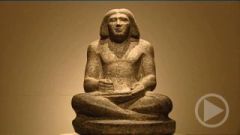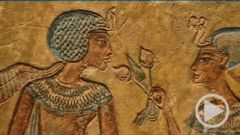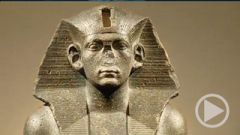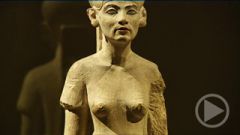- Home
- »
- Germany
- »
- Berlin
- »
- Museum Island
- »
- The Berlin Egyptian Museum
- »
- The Berlin Egyptian Museum - The Head of a Statue of Sesostr...
The Head of a Statue of Senusret III
Head of a statue of Senusret III
Small in size, but monumental in effect – a head of King Senusret III sculpted in granite and dating from 1860 B.C. It was broken off a standing figure – note the back pillar at the back of the crown – the crown of Upper Egypt. The fragment has no inscription. But the name of the king is not in doubt. The facial features are so distinctive that they allow a direct comparison with the many portraits of Senusret III which are identified by inscriptions.
In the portraits of this king and also in those of his son and successor Amenemhat III, Egyptian art achieved a pinnacle of individual portraiture. For a long time, art historians held the view that Egyptian art was incapable of portraying individuals. In these old, curmudgeonly, unfriendly faces, they saw an expression of a trend of the time, culminating in the downfall of the kingdom, which in turn brought the Middle Kingdom to an end a hundred years later.
If we substitute original ancient Egyptian texts for speculation among Egyptologists, these portraits of kings suddenly have a very different meaning. A paean of praise to Senusret III celebrates the king as a wise and resolute ruler of the world:
Greetings, Khakaura , our Horus, divine in manifestations!
You protect the country and extend its borders,
you vanquish the mountain lands with your sacred serpent,
you encompass the two countries with your hands,
you slay the bow peoples without striking a blow,
you shoot the arrow without drawing the bow,
your awesomeness killed the nine bows,
your terribleness caused thousands to die among the bow peoples.
The tongue of your majesty intimidates the Nubians,
your words put the Asians to flight.
Pharaoh conquers the world, without force of arms, with bare hands, with the insignia of royal authority, and above all by the words that he speaks. In his striking features is manifest the wisdom of a culture which was ancient even then, the self-confidence of an unchallenged world ruler and the determination to influence the course of history by word and deed.


